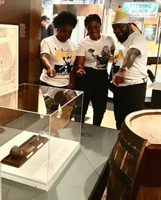

December 2022 NewsletterISSN: 1933-8651
In this issue we present the following articles, news, announcements, and reviews:
|
Articles, Essays, and Reports
News and Announcements
New Books
New Exhibits, Podcast, and Database
Upcoming Conferences
Book and Film Reviews
|
The Future of Black Studies
By Abdul Alkalimat
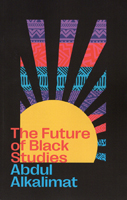
Black Studies is a powerful response to racism: a boundary-pushing discipline, grown out of struggle and community action. Here a founder of the field presents a reimagining of future trends in the study of the Black experience.
Using Marxism, Black Experientialism, Afro-Futurism, and diaspora frameworks, Alkalimat projects a radical future for the discipline at this time of social crisis. Examining cornerstones of culture—the music of Sun Ra, the movie Black Panther, the writer Octavia Butler, and others— he looks at the trajectory of Black liberation thought since slavery, including new research on the rise in the comparative study of Black people all over the world. This book is a powerful read that will inform and inspire students and activists.
The marginalisation of Black voices from the academy is a problem in the Western world. But Black Studies, where it exists, is a powerful, boundary-pushing discipline, grown out of struggle and community action. Here, Alkalimat, one of the founders of Black Studies in the United States, presents a reimagining of the future trends in the study of the Black experience.
Abdul Alkalimat is a founder of the field of Black Studies and Professor Emeritus at the University of Illinois at Urbana Champaign. A lifelong scholar-activist with a PhD from the University of Chicago, he has lectured, taught and directed academic programs across the United States, the Caribbean, Africa, Europe, and China. His activism extends from having been chair of the Chicago chapter of the Student Non-Violent Coordinating Committee (SNCC) in the 1960s, to a co-founder of the Black Radical Congress in 1998. He is the author of the companion volume to this book, The History of Black Studies (Pluto Press, 2021).
This article provides an excerpt from this study, presenting the introduction chapter and a précis of Afro-Futurism's remarkable trajectory, from The Future of Black Studies (Pluto Press, London, 2021; paperback ISBN: 9780745347004, eBook ISBN: 9780745347028, 272 pp.).
Readers of this newsletter can benefit from a promotional discount (40% off) to purchase this great book. Apply code "ADAN40" at checkout on the Pluto Press website, https://www.plutobooks.com/.
[Read or download this full article here in Adobe .pdf format >>>].
[Return to table of contents]
What Was Stono? Discovering a South Carolina Freedom Struggle
By Peter H. Wood
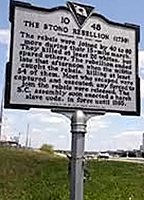
In the pre-dawn hours of Sunday, September 9, 1739, a band of enslaved men attacked a store near the Stono River, roughly 17 miles below Charles Town, South Carolina. They executed two men, seized a cache of arms, and headed southwest—apparently with Spanish St. Augustine on the Florida coast as their ultimate destination.
Along their route, the rebels murdered the families of slaveholders, burning their homes and gathering recruits as they marched. Within hours, scores of enslaved workers had joined their ranks, and they had killed nearly two dozen white colonists. By preventing anyone from escaping to spread the alarm, the band hoped to buy time as their numbers grew.
Successful at first, the insurgents pressed south along the Pon Pon Road, beating drums and raising chants of "Liberty!" But when South Carolina's lieutenant governor encountered them by chance, he avoided capture and rode to spread the alarm. By late afternoon mounted militia managed to overtake the freedom fighters, surrounding them in a field where they had paused to rest.
In the pitched battle that ensued, the well-armed militia gained the upper hand, killing scores of rebels and forcing others to surrender or flee. Though cut short before it grew to an unstoppable size, the scope and violence of the uprising was formidable. As word spread, the largest slave revolt in colonial North America provided a spark of hope for enslaved African-descended people, near and far.
South Carolina's white minority, on the other hand, reacted with fear and launched an immediate crackdown. Legislators imposed a prohibitive duty on importing Africans, and they worked to recruit European immigrants to expand the free white population. In 1740, the Assembly passed a sweeping "Negro Act" that tightened controls over the colony's unfree Black majority.
Within the region's African American community, family members passed down occasional stories of the uprising. But among later generations of white chroniclers, the event was belittled or forgotten. Then, when Black Studies took hold in the 1960s and 1970s in the wake of the Civil Rights Movement, the Stono Revolt gained renewed recognition among historians.
Yet even today—as Americans debate how deeply they dare to explore the country's troublesome past—most citizens remain unaware of this dramatic event and its significance. So it is exciting that Stono's pivotal importance is finally being researched and remembered in new ways.
This booklet offers a brief introduction to what we know and why it seems relevant today. [Read or download this full article in Adobe .pdf format >>>].
[Return to table of contents]
Virginia Slave Quarter Catalogue, 2021
Records from the Department of Historic Resources VCRIS
By J. Mark Wittkofski
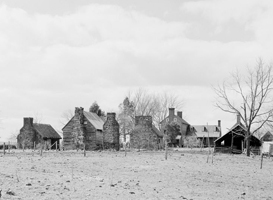
This is a compilation of identified slave and servant quarters, kitchen quarters, and kitchens within the files of the Virginia Department of Historic Resources (DHR), Richmond, Virginia. Initially, a simpler draft of this work was completed in March 2021 to support the ongoing and thorough documentation of buildings for the Virginia Slave Housing Project. At that time, it was realized that many additional resources were present but time restraints limited their gleaning from the files.
The directors of the Virginia Slave Housing Project are Dr. Dennis J. Pogue recently retired from the graduate program in historic preservation at the University of Maryland, School of Architecture, Planning & Preservation and Dr. Douglas W. Sanford, Professor emeritus from the Department of Historic Preservation, University of Mary Washington. Both have extensive training and education in historic preservation and archaeology and their combined experience in Virginia exceeds 70 years. Together they have been extensively documenting quarters of enslaved Virginians since 2007 based on a grant from the National Endowment for the Humanities. The major purposes of the Virginia Slave Housing Project are (1) to compile information for domestic buildings associated with enslaved African Americans in Virginia from archaeological sites, period historical sources, previous architectural surveys, and from surviving quarters; (2) to document examples of slave housing; (3) to share information about slave housing with general and professional audiences; and (4) to encourage the preservation and public interpretation of houses for enslaved people as critical cultural resources for America's history of slavery and for Black heritage. This catalogue then should benefit their research as well as be helpful to others.
The attached catalogue lists all of the records for slave and servant quarters, kitchen quarters, and detached kitchens currently inventoried with DHR's Virginia Cultural Resource Information System (VCRIS). This system presents the Virginia statewide electronic cultural resources database and Geographic Information System (GIS) framework. It provides interactive views of information in the DHR Archives related to properties, historic districts, and archaeological sites, and presents evaluative information about the historic significance of resources. Individual survey records have been created by numerous researchers including architects, architectural historians, other historians, archaeologists, historic preservationists, students, property owners, and others simply interested in documenting and preserving Virginia's significant history. With standing buildings it might be only a matter of time before they are lost to the elements, or to vandalism, demolition or natural catastrophe. Therefore, the task of identifying and documenting these resources is important for being able to tell a more complete history of Virginia.
[Read or download this full article here in Adobe .pdf format >>>].
[Return to table of contents]
Professor Toyin Falola: Living and Globalizing the Humanities
By Olajumoke Yacob-Haliso, Not Even Past
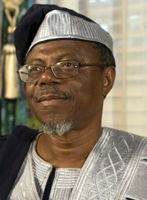
"On October 11, 2022, at State House, Abuja, Nigeria's President Muhammadu Buhari conferred one of the nation's oldest and highest merit honors, the Member of the Order of the Niger (MON), on University of Texas at Austin professor of history, Toyin Falola. Professor Falola is University Distinguished Teaching Professor and Jacob and Frances Sanger Mossiker Chair in the Humanities at UT Austin. Falola is also one of the foremost humanities scholars today. As Africa's most decorated and celebrated academic at home and abroad, with over thirty lifetime achievement awards, sixteen honorary doctorates, eight festschriftens in his honor, seven teaching awards, three chieftaincy titles, book awards named after him and several honorary conferences, Falola is at home with achievements, accolades, awards, and unparalleled distinction."
"Last year, on November 17, 2021, Nigeria's premier university, the University of Ibadan, awarded an academic Doctor of Letters (D. Litt.) degree to Dr Falola, exactly 40 years after the award of his PhD by the University of Ife in 1981. The University of Ibadan is the first African academic institution ever to award the academic D. Litt., an epochal event, and to none more deserving than to such a distinguished global humanities scholar. Falola is a teacher of teachers, a mentor of mentors, an academic leader, astute administrator, writer, poet, polymath, and, without doubt, a far-ranging genius. These recent conferrals provide, therefore, a good occasion to recognize and reflect yet again on his towering contributions to the academy and global scholarship."
[Read this full article online >>>].
[Return to table of contents]
How Saidiya Hartman Changed the Study of Black Life
By Elias Rodriques, The Nation, Nov. 2022.
A conversation with the writer about her pathbreaking book Scenes of Subjection and how our understanding of race has changed in the last two decades.
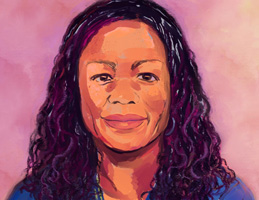
"Saidiya Hartman has shaped studies of Black life for over two decades. Her first book, 1997's Scenes of Subjection, argued that slavery was foundational to the American project and its notions of liberty. Her follow-up, 2006's Lose Your Mother, combines elements of historiography and memoir in exploring the experience and legacy of enslavement. Here she first used a speculative method of writing history given the silences of the archive. And her most recent book, 2019's Wayward Lives, Beautiful Experiments, examines the revolution of everyday life enacted in the practices of young Black women and queer people that created and sustained expansive notions of freedom."
"After 25 years, Hartman's influence is everywhere. Her coining of the phrase 'the afterlife of slavery' changed the ways that historians consider the long ramifications of the chattel regime on Black life. It has prepared the public to engage with the work of artists like Kara Walker, who represent slavery's continued hold on the present. And even the critiques of Hartman's work demonstrate an anxiety about her influence, conceding that she has, in fact, influenced our ability to see the world. I spoke with Hartman earlier this year about the republication of Scenes of Subjection on the occasion of its 25th anniversary, about the ways that people in the 1990s misunderstood race and slavery, and about the expansive visions of freedom that enslaved people cultivated."
[Read this full article and interview online >>>].
[Return to table of contents]
Tsione Wolde-Michael to Lead President's
Committee on the Arts and the Humanities
National Endowment for the Arts, December 15, 2022

Tsione Wolde-Michael, most recently the founding director of the Smithsonian's Center for Restorative History, has been named executive director of the President's Committee on the Arts and the Humanities (PCAH). Under a new Executive Order issued by President Biden, PCAH has been established to engage the nation's artists, humanities scholars, and cultural heritage practitioners on ways to promote excellence in the arts, the humanities, and museum and library services and demonstrate their relevance to the country's health, economy, equity, and civic life.
Wolde-Michael, the youngest and first Black individual to direct PCAH, will lead a high-profile committee of 25 non-federal leaders in the arts, humanities, and museum and library services, expected to be named by the White House in the coming weeks. Under her direction, the committee will advise the president on policy objectives, public/private partnerships, and programs to enhance support for the arts, humanities, and museum and library services across the country- a first, since 2017.
"I've spent my career as a public historian launching large-scale projects from the ground up and working to transform understandings of our nation's past," said Wolde-Michael. "President Biden's new Executive Order supports telling a fuller, more expansive American story through the arts and humanities; it recognizes that these areas are essential to the vitality of our democracy while centering equity, accessibility, and the inclusion of historically underserved communities in an unprecedented way. I look forward to applying my experience to ensure that PCAH reflects that strong vision."
Wolde-Michael began her career at the Smithsonian National Museum of African American History and Culture, where she was part of a team that produced the landmark inaugural exhibition Slavery and Freedom—the nation's first comprehensive exhibit on the history of enslavement. Her international projects include "The Slave Wrecks Project" and working with national and local museums to reinterpret colonial collections. Most recently as the curator of African American Social Justice History, she developed a theory and method for museum practice grounded in the principles of restorative justice. This work helped the Smithsonian National Museum of American History diversify its collections and exhibitions and establish long-term community partnerships and led to the establishment of the Center for Restorative History—the Smithsonian's first center dedicated exclusively to community-based redress work.
[Read this full article online >>>].
[Return to table of contents]
2022 Frederick Douglass Book Prize Winners
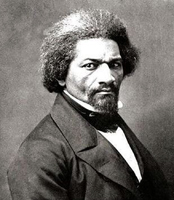
From Press Release -- Yale University's Gilder Lehrman Center for the Study of Slavery, Resistance, and Abolition today has announced the winners for the twenty-fourth annual Frederick Douglass Book Prize, one of the most coveted awards for the study of the slavery in world history. The 2022 Prize will be shared by two scholars. The co-winners are: Tiya Miles for "All That She Carried: The Journey of Ashley's Sack, a Black Family Keepsake" (Random House) and Jennifer L. Morgan for "Reckoning with Slavery: Gender, Kinship, and Capitalism in the Early Black Atlantic" (Duke University Press). Both of the winning books, noted Gilder Lehrman Center Director David Blight, use different scholarly approaches to examine "the complications and persistence of kinship within the commercial and social history of slavery in the Atlantic World."
Jointly sponsored by the Gilder Lehrman Institute of American History and the Gilder Lehrman Center for the Study of Slavery, Resistance, and Abolition at the MacMillan Center at Yale University, this annual prize recognizes the best book written in English on slavery, resistance, and/or abolition published in the preceding year. The $25,000 prize, shared by the two winners, will be presented to Miles and Morgan at an award ceremony sponsored by the Gilder Lehrman Institute at Trinity Church in New York City on February 16, 2023.
The Gilder Lehrman Institute and Gilder Lehrman Center are pleased to celebrate these books as outstanding examples of scholarship and writing about slavery and its ongoing legacies. "All That She Carried," Gilder Lehrman Institute President James Basker noted, is a "terribly important book that helps teachers, students, and the public at large care about history." Review committee member Edward Rugemer, Associate Professor of History and of African American Studies at Yale, observed that "Reckoning with Slavery" is a book that "makes powerful arguments and will be read and debated for a very long time."
 In "All That She Carried," Tiya Miles focuses on a tangible piece of material culture—a cotton sack given by an enslaved mother to her daughter—to remind readers that everyday objects readily dismissed as mundane brim with spirit and significance. Through marvelous writing built on creative archival research, Miles offers a moving account of what this sack meant to the women who made, received, and treasured it through generations. Narrating the story of the discovery and preservation of this object, Miles explores the symbolic values of the sack and its contents not just to the circle of women to whom it belonged but to all of us and American history at large. Crafted with original scholarship and poignant prose, the book engages the deep history of slavery in the United States alongside the nourishing power of love in an inhumane and unloving world.
In "All That She Carried," Tiya Miles focuses on a tangible piece of material culture—a cotton sack given by an enslaved mother to her daughter—to remind readers that everyday objects readily dismissed as mundane brim with spirit and significance. Through marvelous writing built on creative archival research, Miles offers a moving account of what this sack meant to the women who made, received, and treasured it through generations. Narrating the story of the discovery and preservation of this object, Miles explores the symbolic values of the sack and its contents not just to the circle of women to whom it belonged but to all of us and American history at large. Crafted with original scholarship and poignant prose, the book engages the deep history of slavery in the United States alongside the nourishing power of love in an inhumane and unloving world.
 Jennifer L. Morgan's "Reckoning with Slavery" builds on decades of archival research. Inspired by a generation of Black Feminist writing, Morgan has written an "instant classic," in the words of jury member Sasha Turner. Placing women and reproduction at the center of what David Brion Davis called the "heart of slavery," Morgan examines how racial slavery became a core part of capitalism and Western Culture. Through a careful reading of early books on travels to Africa and the Americas, on slavery, and on women, Morgan writes that in the English-speaking world of the 1600s, the ideas of "race" and the "economic practice" of slavery developed during the same period of time, before the creation of colonies. A rich, interdisciplinary study of the early modern Atlantic world, "Reckoning with Slavery" will be essential reading in the fields of demography, economics, and women's studies as well as history.
[Return to table of contents]
Jennifer L. Morgan's "Reckoning with Slavery" builds on decades of archival research. Inspired by a generation of Black Feminist writing, Morgan has written an "instant classic," in the words of jury member Sasha Turner. Placing women and reproduction at the center of what David Brion Davis called the "heart of slavery," Morgan examines how racial slavery became a core part of capitalism and Western Culture. Through a careful reading of early books on travels to Africa and the Americas, on slavery, and on women, Morgan writes that in the English-speaking world of the 1600s, the ideas of "race" and the "economic practice" of slavery developed during the same period of time, before the creation of colonies. A rich, interdisciplinary study of the early modern Atlantic world, "Reckoning with Slavery" will be essential reading in the fields of demography, economics, and women's studies as well as history.
[Return to table of contents]
Open Access Articles on JADAH
The Journal of African Diaspora Archaeology and Heritage (Taylor & Francis Press) offers free access to different articles on a rotating basis. You can find these on the journal website (link). Articles currently available with free access include:
"Chatoyer's Punch Ladle: A Museum Artifact that Speaks to the Hidden History of the Garifuna, An African-Caribbean People," by Christina Welch and Niall Finneran. Abstract: This paper contextualizes the artifact "Punch Ladle, 1773" on display in the "London, Sugar & Slavery" exhibition at Museum of London Docklands (UK). A placard identifies the ladle as once belonging to "Chatoyer, Chief of the Caribs" and as on loan by the West India Committee. Through this artifact, the largely forgotten story of Chatoyer and the so-called Black Caribs (Garifuna) is highlighted, while complexities of the artifact's provenance are analyzed through an object biography approach. The paper also considers the ethical and curatorial implications of the current non-repatriation of the artifact and its present location within the "Slave Owner" part of the exhibition. Finally, by arguing for the artifact's global significance through its association with Chatoyer, a historic African-Caribbean figure of colonial resistance, this article contributes to current museum decolonization debates. Keywords: Object biography, repatriation, St. Vincent, African-Caribbean, Garifuna, Chatoyer, decolonization, curatorial space (link).
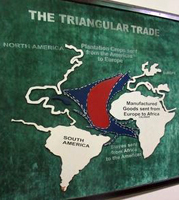 "Localizing the Narrative: The Representation of the Slave Trade and Enslavement Within Nigerian Museums," by Faye Sayer. Abstract: This paper explores the interpretation and presentation of the transatlantic slave trade in Nigerian museums. It focuses on two contrasting case studies, namely the government-funded Slave History Museum (Calabar) and the privately run Seriki Faremi Williams Abass Slave Museum (Badagry). To investigate the complex and conflicting national and local narrative frameworks by which the slave trade and enslavement are presented to the public, this study focuses on qualitative content analysis of museum displays in addition to visitor observations. Comparative analysis of these museums suggests that this historically complex and emotional heritage cannot be understood in isolation from wider local, national, or global narratives. The paper explores the importance of taking a humanizing and empathetic approach to the presentation of the transatlantic slave trade in museums. I also consider how future practice might include ideas of localization and personalization to decolonize "official" slave trade heritage narratives in Nigeria and beyond. Keywords: Museums, slavery, Nigeria, heritage, transatlantic slave trade, localization, decolonization, descendant communities (link).
"Localizing the Narrative: The Representation of the Slave Trade and Enslavement Within Nigerian Museums," by Faye Sayer. Abstract: This paper explores the interpretation and presentation of the transatlantic slave trade in Nigerian museums. It focuses on two contrasting case studies, namely the government-funded Slave History Museum (Calabar) and the privately run Seriki Faremi Williams Abass Slave Museum (Badagry). To investigate the complex and conflicting national and local narrative frameworks by which the slave trade and enslavement are presented to the public, this study focuses on qualitative content analysis of museum displays in addition to visitor observations. Comparative analysis of these museums suggests that this historically complex and emotional heritage cannot be understood in isolation from wider local, national, or global narratives. The paper explores the importance of taking a humanizing and empathetic approach to the presentation of the transatlantic slave trade in museums. I also consider how future practice might include ideas of localization and personalization to decolonize "official" slave trade heritage narratives in Nigeria and beyond. Keywords: Museums, slavery, Nigeria, heritage, transatlantic slave trade, localization, decolonization, descendant communities (link).
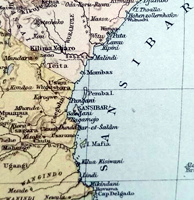 "'Looking for Life': Traces of Slavery in the Structures and Social Lives of Southern Swahili Towns," by Felicitas Becker. Abstract: This article traces the history of slavery and of post-slavery struggles for livelihood and status in the layout, the physical structures, and the social lives of three towns on the southern Swahili Coast: Kilwa, Mikindani, and Lindi. These towns were long surrounded by plantations that relied on the labor of enslaved people. In the first decades of the twentieth century, slave populations dissipated quickly. In towns, the colonial cash crop economy, voluntary rural-urban migration, and the decline of slave-owning elites combined to allow former slaves to assimilate and adopt new urbanite identities. Sufi orders played a central role in affording ex-slaves a respectable presence in town. Nevertheless, former slave owners and former slaves lived in different parts of these towns, former slaves' livelihoods were more precarious, and the imputation of slave origins remains offensive, even today. Indeed, the era of slavery still divides people and still engages the social imagination. Keywords: East Africa, slavery, post-slavery, Sufism, Islam, inequality, urban geography, villagization (link).
"'Looking for Life': Traces of Slavery in the Structures and Social Lives of Southern Swahili Towns," by Felicitas Becker. Abstract: This article traces the history of slavery and of post-slavery struggles for livelihood and status in the layout, the physical structures, and the social lives of three towns on the southern Swahili Coast: Kilwa, Mikindani, and Lindi. These towns were long surrounded by plantations that relied on the labor of enslaved people. In the first decades of the twentieth century, slave populations dissipated quickly. In towns, the colonial cash crop economy, voluntary rural-urban migration, and the decline of slave-owning elites combined to allow former slaves to assimilate and adopt new urbanite identities. Sufi orders played a central role in affording ex-slaves a respectable presence in town. Nevertheless, former slave owners and former slaves lived in different parts of these towns, former slaves' livelihoods were more precarious, and the imputation of slave origins remains offensive, even today. Indeed, the era of slavery still divides people and still engages the social imagination. Keywords: East Africa, slavery, post-slavery, Sufism, Islam, inequality, urban geography, villagization (link).
The Journal provides a focal point for peer-reviewed publications in interdisciplinary studies in archaeology, history, material culture, and heritage dynamics concerning African descendant populations and cultures across the globe. We welcome articles on broad topics, including the historical processes of culture, economics, gender, power, and racialization operating within and upon African descendant communities. We seek to engage scholarly, professional, and community perspectives on the social dynamics and historical legacies of African descendant cultures and communities worldwide.
We are proud to celebrate our journal's 10th anniversary! And belated congratulations to lead editor Lydia Wilson Marshall for receiving the John L. Cotter Award for excellence in historical archaeology from the Society for Historical Archaeology (link)!
[Return to table of contents]
Restorative Justice in Heritage Studies & Archaeology
A New Book Series with Routledge Press
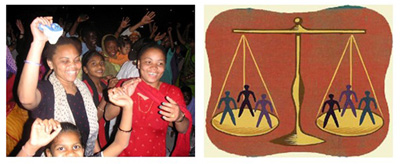
Overview: Restorative justice in heritage and archaeology embraces initiatives for reconciliation of past societal transgressions using processes that are multivocal, dialogic, historically informed, community based, negotiated, and transformative. This series will present works that promote the active and often unconventional ways that archaeologists, historians, and heritage scholars are contributing to a process of remaking. Our authors work to define and illuminate the best practices for restorative justice in these fields and to identify how practitioners and their collaborators are working to redress, reconcile, and remake contemporary society.
Background: The concept of "restorative justice" has been employed mainly in criminal justice and human rights contexts. For example, restorative justice in the realm of criminal sanctions involves a process of justice other than penalties and imprisonment, and typically entails rehabilitation of offenders through reconciliation with victims and a related, stakeholder community. Such initiatives emerged in the 1970s as ways to address the shortcomings of Western legal systems. New approaches focus on perpetrators of wrongs taking responsibility and acknowledging the harms they created. At the same time, victims of harm have a space to grieve, express their perspectives and stories, seek answers and responses to their needs, and repair relationships.
For example, an archaeological and historical study of past sites of enslavement could provide a focal point for creating new commemorations negotiated among members of local and descendant communities related to those sites. Existing memorials to historical figures who engaged in past oppressive regimes provide similar opportunities for dialog and negotiation to envision new ways to address the context and significance of those figures and the many people who were targets of their oppression. Such restorative justice efforts typically focus on multiple perspectives and modes of reconciliation, rather than a narrow vision of retribution and punishment. Reparation initiatives are often multivocal, layered, multiplex, and visionary in this way.

Other examples of such restorative justice projects in archaeology and heritage studies include the current work in Tulsa, Oklahoma to document the 1921 destruction of Black Wall Street and the continuing dynamics of African-American heritage in Tulsa to the present. Elsewhere, archaeologists are collaborating with members of African-American and Indigenous communities to search for missing children. Similar projects search for the remains of the casualties of the Spanish Civil War (1936-1939). Heritage activists also engage with instances of apartheid, cultural destruction through assimilation policies, and genocide in several countries, including work of Truth and Reconciliation Commissions in Canada and South Africa. These examples highlight the bilateral, dialogic, and ongoing process of working towards transformative, meaningful, and enduring justice for aggrieved parties.
Series Editors: Nedra K. Lee, PhD, Department of Anthropology, University of Massachusetts (profile link); Richard Paul Benjamin, PhD, International Slavery Museum and University of Liverpool (profile link); Christopher C. Fennell, PhD, Department of Anthropology, University of Illinois, Urbana-Champaign (profile link).
Learn More: We welcome proposals for single-authored, co-authored, and edited volumes. Interested in proposing a book for this series? Contact one of the series editors: Nedra.Lee@umb.edu, Richard.Benjamin@liverpool.ac.uk, cfennell@illinois.edu. General guidelines for authors are available from Routledge Press (Taylor & Francis) (link). Follow this initiative through our website (link), and on Facebook (link).
[Return to table of contents]
University of South Carolina Partners
with the National Park Service on Civil Rights History
By JBHE.com
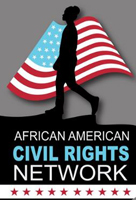
"The Center for Civil Rights History and Research at the University of South Carolina is partnering with the National Park Service to enhance the center's work to better relate the history of the civil rights movement in the state."
"Under a five-year agreement with the park service, the center will expand its existing work in civil rights education and scholarly research, including support for exhibits and programming at South Carolina sites in the African American Civil Rights Network. The center will help to grow the network in South Carolina by serving as a resource to property owners, community leaders, and organizations interested in joining the network."
"Congress created the African American Civil Rights Network in 2017 to present a comprehensive narrative of the people, places, and events associated with the civil rights movement in the United States. The network encompasses historic sites, museums, libraries, and interpretive programs to commemorate, honor, and understand the history, significance, and ongoing relevance of the movement."
"The partnership will help the center preserve and grow collections, including new oral histories; train K-12teachers; create and host public programs; and develop exhibits that chronicle the history of the civil rights movement in South Carolina and the United States."
[Read this full article online >>>].
[Return to table of contents]
Clotilda Descendants Marked Anniversary of Last Slave Ship
By NBCnews.com
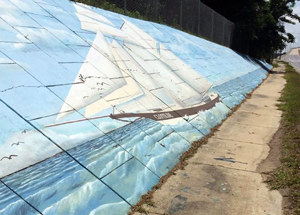
"Descendants of the last African people abducted into slavery and brought to America's shores gathered over the weekend on the banks of an Alabama river to pay tribute to their ancestors."
"The descendants of the 110 people aboard the Clotilda, the last known slave ship to bring enslaved African people to the United States, held a ceremony to mark the anniversary of the vessel's arrival."
"Dressed in white and walking slowly to the beat of an African drum, the descendants made their way to the banks of the Mobile River near Alabama's coast. A wreath of white, yellow and red flowers was carried into the river by a kayaker and released into the waters."
"The event marked the anniversary of the ship arriving 162 years ago with 110 enslaved people brought to the country against their will, Darron Patterson, president of the Clotilda Descendants Association, said in a telephone interview with The Associated Press."
"In 1860, the Clotilda illegally transported 110 people from what is now the west African nation of Benin to Mobile, Alabama. The voyage, which happened decades after the law banning the importation of slaves had taken effect, began as a bet when a wealthy plantation owner wagered he could import a shipload of slaves without being caught."
"The 2019 discovery of the remnants of the Clotilda sparked renewed interest in its saga. But Patterson said the focus should be on the people it carried."
"'It's not about the ship. It's not about sails or nails or wood. It's about the people who were in the cargo hold. And their stories were amazing stories,' he said. Patterson's great-great-grandfather, Kupollee—a beekeeper, farmer and woodworker—was one of the 110 on the ship."
"The captives of the Clotilda endured a cruel ocean voyage packed into a cargo hold and five years of slavery but were able to maintain their African customs, Patterson said."
"'The biggest thing for us is to make sure that no one ever forgets this story... America has a long way to go in learning how to embrace its history, including its dark slave history,' Patterson said."
"The 'landing' ceremony was held near the bridge to the Africatown community founded by Clotilda survivors after the Civil War."
"'Proud of my heritage. I'd like to say even more so proud of the resilience and the legacy that they left behind,' descendant Ronald Ellis Jr told Fox10."
[Read this full article online >>>].
[Return to table of contents]
Recent Dissertations on History

The following, non-exhaustive list of dissertations and masters theses on African diaspora history for the period since September 2010 was compiled by Chris Fennell based on listings in the Proquest.com service. Past Newsletter issues provided such lists annually, so they were indeed "recent." This time, we cover a decade to catch up. The September 2005, 2006, 2007, 2008, 2009, and 2010 issues of the African Diaspora Archaeology Newsletter provided similar compilations of dissertations and theses on archaeology and history for the period of 2000-2010. The September 2022 issue provides a compilation of dissertations and theses in archaeology for 2010-2022. If you are aware of other recent dissertations, please email me, and I will include the information in a future newsletter edition. The dissertations listed below are doctoral theses (Ph.D.), unless otherwise indicated (M.A. or M.S.), and are listed in chronological order by year and then alphabetic order by the author name within each year. Abstracts and full texts are available online from the Proquest.com service.
History
2022
Women of the Encomienda: Households and Dependents in Sixteenth-Century Yucatan, Mexico, by Hannah R. Abrahamson, Ph.D., Emory University. 2022.
Minting Slavery in the Colonial Andes: Labor and Race in Potosí and Lima, by James Almeida, Ph.D., Harvard University. 2022.
The Text(Tiles) of Adinkra Symbols: West African Art, Gender, and Poetic Translations, by Rachel A. Ansong, Ph.D., University of Rhode Island. 2022.
"Do for Do Ain't No Obeah:" Backtime Religion in the Danish West Indies, 1700-1880, by Gregory M. Carter, Ph.D., Southern Illinois University at Carbondale. 2022.
The Preservation of a Historic Black Farm: Matt Gardner Homestead in Giles County, Tennessee, by Abigail Coomes, M.A., Middle Tennessee State University. 2022.
A Field of Dreams: The Freedmen's Bureau and Their Attempt to Provide Equality for the African American Community, 1865–1872, by Charles Lee Cox, Jr., M.A., University of West Florida. 2022.
The Bray Schools and Black Education in the Early American Republic, by Mitchell Allen Fellows, M.A., Utah State University. 2022.
Preservation, Public History, and the Rural African American Church: Emery Methodist Church, Rutherford County, Tennessee, 1869–Present, by Alexis Matrone, M.A., Middle Tennessee State University. 2022.
Of Our Stock and Blood: Empire, Religion, and Afro-Diasporic Identity, 1838–1945, by Briana Adline Royster, Ph.D., New York University. 2022.
Slavery, Surveillance, and Carceral Culture in Early New York City, by Max Speare, Ph.D., University of California, Irvine. 2022.
Confederately Wrong: The Names of Hermitage Neighborhood it Should be Changed, by Christopher Toombs, M.A., Louisiana State University and Agricultural & Mechanical College. 2022.
A Quest for Freedom: The History of Marronage and Maroon Communities in the United States, 1513-1865, by Ainsworth Leslie Tracey, Ph.D., University of Memphis. 2022.
Securing Power During Reconstruction: How Freed People Used Education to Become a Self-Sustaining Population, by Olivia Williams, M.A., College of Charleston. 2022.
In Search of the Good Death: Death Care and the Impact on Communities of Color in Post-Civil War Texas, by Wix, Elaine Honeycutt Wix, M.A., Southern New Hampshire University. 2022.
2021
African Americans Who Remained In and Returned to the American South during the Great Migration, by Beatrice Juanita Adams, Ph.D., Rutgers University. 2021.
White Discipline, Black Rebellion: A History of American Race Riots from Emancipation to the War on Drugs, by Jordan C. Burke, Ph.D., University of New Hampshire. 2020.
The Graveyard Shift: Treatment of Gravesites over Time at Bethel and Old Bethel Churches in Charleston, South Carolina, by Sarah Elizabeth Clifton, M.S., Clemson University. 2021.
Liquid Capital: Alcohol and the Rise of Slavery in the British Atlantic, 1623–1736, by Lila O'Leary Chambers, Ph.D., New York University. 2021.
A Crescendo of Violence: A Biohistorical Assessment of Violence as a Form of Social Control Involving the African Population of New York City during the 18th Century, by Christopher R. Crain, Ph.D., College of William and Mary. 2021.
This Country Is Exceedingly Fertile: Gender, African American Emigration, and Visions of Rural Autonomy in Haiti, 1824-1880, by Bianca Dang, Ph.D., Yale University. 2021.
The Moravian Mission to Africans in Purrysburg, South Carolina, 1738-1740, by Mark J. Dixon, Ph.D., Princeton Theological Seminary. 2021.
Cemeteries, Construction, and Complicity Tyler's Universe Cemetery as a Black Burial Site under Distress, by Anjelyque Easley, M.A., University of Texas at Arlington. 2021.
Enslaved Rebellion and Abolitionist Imperialism in Britain's Atlantic World, 1807-1884, by Lewis Eliot, Ph.D., University of South Carolina. 2021.
Credit Is Due: African Americans as Borrowers and Lenders in Antebellum Virginia, by Amanda White Gibson, Ph.D., College of William and Mary. 2021.
Creating a Common Culture of Slavery: Native, Black, and White Unfreedom in the Ohio River Valley, 1700–1865, by Alexis Guilbault, Ph.D., Indiana University. 2021.
The Politics of Authenticity: Recontextualizing Hybridity and Syncretism in African Popular Music, by Alaba Ilesanmi, M.A., Florida State University. 2021.
The Work of Movement: The Trials and Tribulations of Black Emigration Organizing in the Deep South, 1861–1885, by Matthew James Law, Ph.D., Clark University. 2021.
A Biocultural Analysis of the Impacts of Interactions between West Africans and Europeans during the Trans-Atlantic Trade at Elmina, Ghana, by Heidi Ellen Miller, Ph.D., University of South Florida. 2021.
Smallpox and Slavery: Morbidity and Medicine in the Early Modern Black Atlantic, by Elise Agatha Mitchell, Ph.D., New York University. 2021.
Becoming Citizens: Afro-Mexicans, Identity, and Historical Memory in Guadalajara, 17th to 19th Centuries, by Jorge E. Delgadillo Núñez, Ph.D., Vanderbilt University. 2021.
Beasts, Birds, and Bondsmen: Animal and Slave Interactions in Atlantic World Slavery, by Rachael Lindsay Pasierowska, Ph.D., Rice University. 2021.
Capitalism in Color: Religion, Companies, and Black Economic Activism in the Age of Paul Cuffe, 1807-1817, by Timothy Mark Rainey II, Ph.D., Emory University. 2021.
¡Palenque!: Cross Cultural Exchange Among Indigenous and African Peoples in 17th Century Veracruz, Mexico, by Christian Valentin Ramirez, Ph.D., Michigan State University. 2021.
Revitalizing "Forgotten" African American Cemeteries, by Rachel K. Ransone, M.A., East Carolina University. 2021.
The Ties that Bind Us to Earth: Neighborhoods and Interpersonal Relationships of Black Southern Marylanders, 1850-1910, by Ana Carmin Rosado, Ph.D., Northwestern University. 2021.
Facing Freedom: African American Emancipation in Antebellum Portraiture, by Jillian Vaum Rothschild, Ph.D., University of Pennsylvania. 2021.
Magic and Divination in Jamaica's Freedom Struggle, 1728-1824, by Max Strackbein-Bussey, M.A., Arizona State University. 2021.
The Nickens Nine: Free African Americans in Lancaster and Northumberland Counties, Virginia, during the American Revolution, by Karen E. Sutton, Ph.D., Morgan State University. 2021.
Cotton in the Crevices: Remnants of a Black Utopia, by DaMario Walker-Brown, M.A., University of Cincinnati. 2021.
Seeing the Materiality of Race, Class, and Gender in Orange County, Virginia, by Stefan F. Woehlke, University of Maryland, College Park. 2021.
2020
White Discipline, Black Rebellion: A History of American Race Riots from Emancipation to the War on Drugs, by Jordan C. Burke, Ph.D., University of New Hampshire. 2020.
A New Race of Christians: Slavery and the Cultural Politics of Conversion in the Atlantic World, by Matthias Fischer, Ph.D., University of Maryland, College Park. 2020.
The Waiting Man: Enslaved Male Domestics in Virginia, 1619-1800, by Cathleene B. Hellier, Ph.D., College of William and Mary. 2020.
Remaking African America in the Lower Mississippi Valley, 1790–1860, by William D. Jones, Ph.D., Rice University. 2020.
Enslavement and Empire in the French Caribbean, 1793–1851, by Joseph la Hausse de Lalouvière, Ph.D., Harvard University. 2020.
Engendered Experiences of Freedom: Liberated African Women in Rio De Janeiro, 1834-1864, by Ana Paula Nadalini Mendes, M.A., University of Maryland, College Park. 2020.
Black Liberalism: The Formation of Race and Nation in the Río de la Plata, 1870-1900, by Keyanah B. Nurse, Ph.D., New York University. 2020.
'The Once Peaceful Little Town': Edmondson, Arkansas, and the Decline of African American Landownership, by Samuel Morris Ownbey, M.A., University of Arkansas. 2020.
Apparitions of the Atlantic: Mobility, Kinship, and Freedom among Afro-Brazilian Emigrants from Bahia to Lagos, 1850–1900, by Susan Alexandra Corey Rosenfeld, Ph.D., University of California, Los Angeles. 2020.
Race and Abolition in the Anglophone Atlantic, c. 1730–1840, by Sean Morey Smith, Ph.D., Rice University. 2020.
Defiant: African American Legal and Cultural Responses to Northern White Supremacy, 1865-1915, by Tyler Daniel Sperrazza, Ph.D., Pennsylvania State University. 2020.
A Gendered Perspective of the Actions of Formerly Enslaved Men and Women in the American South, 1860-1880, by Scott Carter Thiele, M.A., San Diego State University. 2020.
Persistence of the Spirit: Kongo and Conjure in the Antebellum South Carolina Lowcountry, 1700-1830, by Amber Withers, Ph.D., University of California, Los Angeles. 2020.
2019
"Children of Africa, Shall Be Haytians:" Prince Saunders, Revolutionary Transnationalism, and the Foundations of Black Emigration (1815-1865), by Westenley Alcenat, Ph.D., Columbia University. 2019.
Do Brasil Para África: O Café Na Viragem Do Império Português (1807-1850), by Alan De Carvalho Souza, Ph.D., Universidade de Lisboa, Portugal. 2019.
"The Wilderness Within": African Diasporic Religion in New Granada, 1690-1790, by Bethan Ruth Fisk, Ph.D., University of Toronto. 2019.
Foundation and Growth of the Cuban-Based Transatlantic Slave Trade, 1790–1820, by Jorge Felipe Gonzalez, Ph.D., Michigan State University. 2019.
Carceral State: Baton Rouge and Its Plantation Environs across Emancipation, by William Iverson Horne, Ph.D., George Washington University. 2019.
"Art, Trade, and Mystery": African-American Artisans in Nineteenth-Century South Carolina, by Anne Elizabeth Kerth, Ph.D., Princeton University. 2019.
Reconstructing Race, Place, and Population: Postemancipation Migrations and the Making of the Black South, 1865–1915, by Keith D. McCall, Ph.D., Rice University. 2019.
Wyandot, Shawnee, and African American Resistance to Slavery in Ohio and Kansas, by Diane Miller, Ph.D., University of Nebraska, Lincoln. 2019.
"He Says He Is Free": Asserting Black Personhood in the British West Indies, 1738-1838, by Rebecca Leah Schneider, Ph.D., University of Colorado at Boulder. 2019.
Plantations, Planning and Patterns: An Analysis of Landscapes of Surveillance on Rice Plantations in the ACE Basin, SC, 1800–1867, by Sada Stewart, M.S., Clemson University. 2019.
Learning the Land: Indians, Settlers, and Slaves in the Southern Borderlands, 1500-1850, by W. Cane West, Ph.D., University of South Carolina. 2019.
2018
Frontiers Beyond Abolition: Fugitive Slave Communities and Resistance in Maranhão and Pará, Brazil, 1860-1950, by Johnathan Abreu, Ph.D., University of California, San Diego. 2018.
Roots in Stone and Slavery Permanence, Mobility, and Empire in Seventeenth-Century Cartagena de Indias, by Ana María Silva Campo, Ph.D., University of Michigan. 2018.
Enslaved Native Americans and the Making of South Carolina, 1659–1739, by Andrew Johnson, Ph.D., Rice University. 2018.
Constructing Imperial Spaces: The Spanish and Mosquito Conquests of Eighteenth-century Central America, by Daniel M. Mendiola, Ph.D., University of Houston. 2018.
From Black Hands to White Mouths: Charleston's Freed and Enslaved Cooks and Their Influence on the Food of the South, by Kevin E. Mitchell, M.A., University of Mississippi. 2018.
From Enslaved to Free Consumers: African Americans' Struggle for Consumer Autonomy and Purchasing Power in the Civil War and Reconstruction South, by Laura Beth Moore, Ph.D., University of California, Santa Barbara. 2018.
Life after Death: How Olivewood's Cemetery Records Resurrect the History of Houston's Black Community, by Lisa M. Mouton, M.A., Sam Houston State University. 2018.
"What Are We Going to Do for Ourselves?" African American Women and the Politics of Slavery from the Antebellum Era to the Great Depression, by Tiffany Player, Ph.D., Washington University in St. Louis. 2018.
"To Enjoy the Blessings of Freedom": Slavery, Manumission, and Colonization in the District of Columbia (1790-1862), by Lynn A. Price, Ph.D., George Mason University. 2018.
The Sanctioned Antiblackness of White Monumentality: Africological Epistemology as Compass, Black Memory, and Breaking the Colonial Map, by Christopher G. Roberts, Ph.D., Temple University. 2018.
Sites Seen and Unseen: Mapping African American Women's Public Memorialization, by Alexandria Russell, Ph.D., University of South Carolina. 2018.
The People of African Descent in Colonial Oaxaca, 1650–1829, by Sabrina Smith, Ph.D., University of California, Los Angeles. 2018.
Denmark's Veiled Role in Slavery in the Americas: The Impact of the Danish West Indies on the Transatlantic Slave Trade, by Scott A. Stawski, M.A., Harvard University. 2018.
Jumping Overboard: Examining Suicide, Resistance, and West African Cosmologies during the Middle Passage, by Robert L. Stevenson, Jr., Ph.D., Michigan State University. 2018.
"Esclavos que Fueron" in Santo Domingo, 1768-1844, by Maria Cecilia Ulrickson, Ph.D., University of Notre Dame. 2018.
The Family Politic: Free African American Gender and Belonging in Virginia, 1793-1865, by Elizabeth Joyce Wood, Ph.D., College of William and Mary. 2018.
2017
Stitching Culture: Enslaved African American Quiltmaking in the Prejudicial South, by Kelby Mckeel Cox, M.A., University of Alabama. 2017.
Neither Northern Nor Southern: The Politics of Slavery and Freedom in Philadelphia, 1820-1847, by Elliott Drago, Ph.D., Temple University. 2017.
Empire, Wyoming: An African American Community in the Equality State, by Robert M. Galbreath, M.A., University of Wyoming. 2017.
Refusing to be Dispossessed: African American Land Retention in the U.S. South from Reconstruction to World War II, by Camille Goldmon, M.A., University of Arkansas. 2017.
"Upon This Rock": Architectural, Material, and Visual Histories of Two Black Protestant Churches, 1881-1969, by Melanee C. Harvey, Ph.D., Boston University. 2017.
"Bajan to Gullah" Cultural Capital: Wood, Stone, Iron, and Clay 1670 to 1770, by Ramona Arlen La Roche, Ph.D. University of South Carolina. 2017.
An Awful Gladness: African American Experiences of Infant Death from Slavery to the Great Migration, by Wangui Monica Muigai, Ph.D., Princeton University. 2017.
Indian, Black, Mustee, and Music: Race, Identity, and Culture in Native Communities During the Age of Whaling, by Tara M. Munro, M.A., University of Massachusetts Boston. 2017.
Making Slavery's Borders: Legal Culture and the Transformation of Slavery's Northwestern Frontier, 1787-1860, by Jesse Nasta, Ph.D., Northwestern University. 2017.
A Republic of Lost Peoples: Race, Status, and Community in the Eastern Andes of Charcas at the Turn of the Seventeenth Century, by Nathan Weaver Olson, Ph.D., University of Minnesota. 2017.
Chickasaw Freedpeople at the Crossroads of Reconstruction, by Alaina Elizabeth Roberts, Ph.D., Indiana University. 2017.
To Heal and to Harm: Medicine, Knowledge, and Power in the Atlantic Slave Trade, by Carolyn Elizabeth Roberts, Ph.D., Harvard University. 2017.
Dying Free: African Americans, Death, and the New Birth of Freedom, 1863-1877, by Ashley N. Towle, Ph.D., University of Maryland, College Park. 2017.
2016
Examining the Cultural and Historical Impact of the National Historic Site Designation in Nicodemus, Kansas, by Ashley Adams, Ph.D., Walden University. 2016.
Lydia Cabrera, the Storyteller as Collector, by Elise Arnold-Levene, Ph.D., Columbia University. 2016.
Black Museology: Reevaluating African American Material Culture, by Ashley N. Bouknight, Ph.D., Middle Tennessee State University. 2016.
Veracruz and the Caribbean in the Seventeenth Century, by J. M. H. Clark, Ph.D., Johns Hopkins University. 2016.
"We Cleared the Land with Our Own Hands": Space and Place in African American Community Building and Freedom Struggles in the Missouri Bootheel, 1890-1968, by Heidi L. Dodson, Ph.D., University of Illinois at Urbana-Champaign. 2016.
A West Indian Jubilee in America: British Emancipation and the American Abolition Movement, by Dexter Joey Gabriel, Ph.D., State University of New York at Stony Brook. 2016.
The Rise and Fall of Seneca Village: Race and Space on the Margins of Nineteenth-Century New York City, by Alexander Manevitz, Ph.D., New York University. 2016.
Race and Freedom in the African Americas: Free People of Color and Social Mobility in Cartagena and Charleston, by John Garrison Marks, Ph.D., Rice University. 2016.
The Long Middle Passage: The Enslavement of Africans and the Trans-Atlantic Slave Trade, 1640-1808, by Nicholas Radburn, Ph.D., Johns Hopkins University. 2016.
Slate Pencils?: Education of Free and Enslaved African American Children at the Bray School, Williamsburg, Virginia, 1760-1774, by Valerie Scura Trovato, M.A., College of William and Mary. 2016.
"Endearing Ties": Black Family Life in Early New England, by Gloria McCahon Whiting, Ph.D., Harvard University. 2016.
2015
"Not without a History": African American Schoolhouses in Gibson County, Tennessee, by Amanda Barry, M.A., Middle Tennessee State University. 2015.
From Freedom in Africa to Enslavement, and Once again Freedom, in Brazil: Constructing the Lives of African Libertos in Nineteenth-century Salvador da Bahia through the Analysis of Post-mortem Testaments, by Asligul Berktay, Ph.D., Tulane University. 2015.
Embodied Placemaking as a Rhetoric of Citizenship on Johns Island, South Carolina, by Michael Dimmick, Ph.D., University of Wisconsin, Madison. 2015.
Mastering Magico-medicine: Slave Health and Culture on New World Plantations, by Linsey Janet Ford, M.A., University of New Hampshire. 2015.
The Other Underground Railroad: Hidden Histories of Slavery and Freedom across the Porous Frontiers of Nineteenth-Century United States, Mexico, and the Caribbean, by Maria Esther Hammack, M.A., East Carolina University. 2015.
The Kongolese Atlantic: Central African Slavery and Culture from Mayombe to Haiti, by Christina Frances Mobley, Ph.D., Duke University. 2015.
Runaway Slaves and the Making of Georgia, by Anthony F. Moffett, Ph.D., University of Florida. 2015.
The Imagined Community: France's Racial Dichotomy at the Turn of the Twentieth Century, by Donna Y. Nelson, M.A., North Carolina Central University. 2015.
Slavery on Exhibition: Display Practices in Selected Modern American Museums, by Kym Snyder Rice, Ph.D., George Washington University. 2015.
Reinterment at The African Burial Ground: The Material Result of Ideology, by Laura Elizabeth Rocke, M.A., University of Nevada, Reno. 2015.
"I, Too, Am America": African-American and Afro-Caribbean Identity, Citizenship and Migrations to New York City, 1830s to 1930s, by Janira Phedre Teague, Ph.D., University of California, Los Angeles. 2015.
Re/membering the Sacred Womb: The Religious Cultures of Enslaved Women in Georgia, 1750-1861, by Alexis S. Wells, Ph.D., Emory University. 2015.
Strange Fruit on the Southern Plains: Racial Violence, Lynching, and African Americans in Oklahoma, 1830-1930, by Evan Woodson, M.A., Oklahoma State University. 2015.
2014
Mexican Canaan: Fugitive Slaves and Free Blacks on the American Frontier, 1804-1867, by Mekala Shadd-Sartor Audain, Ph.D., Rutgers University. 2014.
Beyond the Missions: Ethnogenesis in Colonial Paraguay, 1556-1700, by Shawn Michael Austin, Ph.D., University of New Mexico. 2014.
"I Bear Witness": An African's Quest for Faith and Community in the Atlantic World, by Joseph Alan Beatty, University of Florida. 2014.
Landscapes of Work: The Domestic Outbuildings of Central Maryland, 1760-1929, by Melissa Blair, Ph.D., University of Delaware. 2014.
The Price of Citzenship: Black Protest, American Law, and the Shaping of Society, 1827-1868, by Christopher James Bonner, Ph.D., Yale University. 2014.
An Experiment in Self-government: Haiti in the African-American Political Imagination, 1863-1915, by Brandon R. Byrd, Ph.D., University of North Carolina at Chapel Hill. 2014.
Aprons and Tobacco Leaves: The Agency of Black Women in Winston-Salem and the North Carolina Piedmont, 1855-1920, by Dawn Cook, M.A., California State University, Fullerton. 2014.
Homeplace: Unearthing and Tracing the Oral Traditions and Subjugated Knowledge of a Multigenerational Woman-centered African American Family, by Paulette Theresa Cross, Ph.D., University of Utah. 2014.
Fugitive Freedoms: A Race, Politics and Black Culture Circuit Before Civil Rights, by Thulani Davis, Ph.D., New York University. 2014.
"The Indian Image in The Black Mind:" Representing Native Americans in Antebellum African American Public Culture, by Arika Easley-Houser, Ph.D. Rutgers University. 2014.
From Steaming Hearths: The Transition from English Colonial Fare to African Food ways in the Coastal Regions of the American Upper South, by Sue Harding Gurley, M.A., East Carolina University. 2014.
Slavery, Freedom, and Dependence in Pre-Revolutionary Boston, 1700-1775, by Jared Ross Hardesty, Ph.D., Boston College. 2014.
Fashioning Slavery: Slaves and Clothing in the U.S. South, 1830-1865, by Katie Knowles, Ph.D., Rice University. 2014.
Nominating Sweet Olive Cemetery: Baton Rouge's Oldest African American Cemetery and the Preservation Process of Urban Historic Cemeteries in Southeast Louisiana, by Anne Lucia Mahoney, M.A., University of Louisiana at Lafayette. 2014.
Brotherhoods of Their Own: Black Confraternities and Civic Leadership in São Paulo, Brazil, 1850-1920, by Alicia L. Monroe, Ph.D., Emory University. 2014.
Love and Marriage: Domestic Relations and Matrimonial Strategies Among the Enslaved in the Atlantic World, by Tyler D. Parry, Ph.D., University of South Carolina. 2014.
A Historical Materialist Analysis of Nicodemus, by Valerie A. Suarez, M.A., Howard University. 2014.
Entangled with the Yoke of Bondage: Black Women in Massachusetts, 1700-1783, by Felicia Y. Thomas, Ph.D., Rutgers University. 2014.
Freedom Is Not Enough: African Americans in Antebellum Fairfax County, by Curtis L. Vaughn, Ph.D., George Mason University. 2014.
2013
Hilltop: A Historic African American Community, by Dorothy Beyer Alexander, M.A., University of Maryland, Baltimore County. 2013.
A Union of Church and State: The Freedmen's Bureau and the Education of African Americans in Virginia from 1865–1871, by Aaron Jason Butler, Ed.D., College of William and Mary. 2013.
Troubled Journey: Choctaws, Slaves, and Freedmen, by Ambronita Rose Douzart, Ph.D., University of Texas at Dallas. 2013.
Christian Slavery: Protestant Missions and Slave Conversion in the Atlantic World, 1660–1760, by Katharine Reid Gerbner, Ph.D., Harvard University. 2013.
Deep River: Slavery, Empire, and Emancipation in the Upper Mississippi River Valley, 1730–1860, by Matthew Scott Heerman, Ph.D., University of Maryland, College Park. 2013.
African American Colonization and Identity, 1780-1925, by Matthew J. Hetrick, Ph.D., University of Delaware. 2013.
Spirituals and Their Interpretation, from Slavery to 1970, by Genithia Lilia Hogges, M.A., Boston University. 2013.
"Blessed are the Peacemakers": African American Emigration to Haiti, 1816-1826, by Chrislaine Pamphile Miller, Ph.D., University of California, Santa Cruz. 2013.
From Cultural Violence to Cultural Resistance in Antebellum America, by Okera Daniels Nsombi, Ph.D., University of Cincinnati. 2013.
No Longer Lost at Sea: Black Community Building In the Virginia Tidewater, 1865 to the post-1954 Era, by Hollis Earl Pruitt, Ph.D., College of William and Mary. 2013.
Lucumí (Yoruba) culture in Cuba: A Reevaluation (1830s-1940s), by Miguel Ramos, Ph.D., Florida International University. 2013.
Transformation of "Old" Slavery into Atlantic Slavery: Cape Verde Islands, c. 1500–1879, by Lumumba Hamilcar Shabaka, Ph.D., Michigan State University. 2013.
Urban Slavery in Colonial Puebla de los Ángeles, 1536–1708, by Pablo M. Sierra, Ph.D., University of California, Los Angeles. 2013.
Black Flight: Tracing Black Refugees Throughout the Revolutionary Atlantic World 1775–1812, by Jennifer K. Snyder, Ph.D., University of Florida. 2013.
Pioneering Identity on the Frontier: Slaves, Soldiers, and Settlers in the American West, by Lauren Cordes Tate, Ph.D., Indiana University. 2013.
Blurring the Lines of Race and Freedom: Mulattoes in English Colonial North America and the Early United States Republic, by Aaron B. Wilkinson, Ph.D., University of California, Berkeley. 2013.
Capitalizing Subjects: Free African-Descended Women of Means in Xalapa, Veracruz during the Long Seventeenth Century, by Danielle Terrazas Williams, Ph.D., Duke University. 2013.
2012
Plantation Schools: A History of Rural Black One-room Schools in the Mid-South and the Mississippi Delta from Reconstruction to 1968, by Maurice Brown, Ph.D., University of Memphis. 2012.
"They Made Gullah": Modernist Primitivists and the Discovery and Creation of Sapelo Island, Georgia's Gullah Community, 1915-1991, by Melissa L. Cooper, Ph.D., Rutgers University. 2012.
African Slavery in Colonial Veracruz: The Factors that Aided its Creation and Expansion, by Veronica Nohemi Duran, M.A., University of Texas, Pan American. 2012.
Bulwark of the Nation: The Northern Black Press, Political Radicalism, and Civil Rights 1859–1909, by Kerri K. Greenidge, Ph.D., Boston University. 2012.
French Africans in Ojibwe Country: Negotiating Marriage, Identity and Race, 1780–1890, by Mattie Marie Harper, Ph.D., University of California, Berkeley. 2012.
Remapping Black Manhattan: Transformations of Space in the Early Republic City, by Jennifer Anne Hull, Ph.D., University of Wisconsin, Madison. 2012.
Freedom, Kinship, and Property: Free Women of African Descent in the French Atlantic, 1685-1810, by Jessica Marie Johnson, Ph.D., University of Maryland, College Park. 2012.
Africans in Britain, 1500-1640, by M. Kaufmann, D.Phil., University of Oxford. 2012.
Recovering Green in Bronzeville: An Environmental and Cultural History of the African American Great Migration to Chicago, 1915–1940, by Brian James McCammack, Ph.D. Harvard University. 2012.
Mulatto Bend: Free People of Color in Rural Louisiana, 1763–1865, by Johanna Lee Davis Smith, Ph.D., Tulane University. 2012.
Intimate Frontiers: Indians, French, and Africans in Colonial Mississippi Valley, by Sonia Toudji, Ph.D., University of Arkansas. 2012.
Slave Housing: In Search of Endangered Architecture, by Syra V. Valiente, M.A., Clemson University. 2012.
Benevolence and Bitterness: The African-American Experience in 19th Century Connecticut, by Theresa C. Vara-Dannen, Ph.D., Swansea University. 2012.
2011
From Shipmates to Soldiers: Emerging Black Identities in Montevideo, 1770–1850, by Alex Borucki, Ph.D., Emory University. 2011.
Borderland Blacks: Rochester, New York and St. Catharines, Ontario, 1850–1860, by Daniel J. Broyld, Ph.D., Howard University. 2011.
The Economic Geography of Race in Post-conquest Brazil, by Justin Robert Bucciferro, Ph.D., University of Colorado at Boulder. 2011.
Becoming the Land of Lincoln: Emancipation and the Construction of Race in Illinois, 1853–1892, by Sean P. Cadagin, Ph.D., Northern Illinois University. 2011.
"Where the Spirit of the Lord Is, There is Freedom": Black Spirituality and the Rise of the Antislavery Movement, 1740–1841, by Dianne Wheaton Cappiello, Ph.D., Cornell University. 2011.
Black Nativism: African American Politics, Nationalism and Citizenship in Baltimore and Philadelphia, 1817 to 1863, by Andrew Keith Diemer, Ph.D., Temple University. 2011.
Negotiating Identities, Striving for State Recognition: Blacks in Córdoba, Argentina 1776–1853, by Erika D. Edwards, Ph.D., Florida International University. 2011.
Freeborn Men of Color: The Franck Brothers in Revolutionary North America, 1755–1820, by Shirley L. Green, Ph.D., Bowling Green State University. 2011.
Black Magic Woman: Towards a Theory of Africana Women's Resistance, by Iyelli Ichile Hanks, Ph.D., Howard University. 2011.
The Gold Coast, Jamaica and New York: Akan Ideas of Freedom in the Afro-Atlantic during the Eighteenth Century, by Robert Hanserd, Ph.D., Northern Illinois University. 2011.
Inalienable Possessions and Flyin' West: African American Women in the Pioneer West, by Justin Hosbey, M.A., University of South Florida. 2011.
The Occupation of Havana: War, Trade, and Slavery in Eighteenth-century Cuba, by Elena Andrea Schneider, Ph.D., Princeton University. 2011.
Crossroads: Slave Frontiers of Angola, c. 1780–1867, by Daniel Barros Domingues da Silva, Ph.D., Emory University. 2011.
Freedom in Amazonia: The Black Peasantry of Pará, Brazil, 1850–1950, by Oscar de la Torre Cueva, Ph.D., University of Pittsburgh. 2011.
Towards A "Griotic" Methodology: African Historiography, Identity Politics and Educational Implications, by Abu Jaraad Toure, Ph.D., Ohio State University. 2011.
Slavery and Free Black Labor in Northern Maryland, 1762 to 1864: Rethinking the Focus at Hampton National Historic Site, by Carol M. Van Natta, M.A., University of Maryland, Baltimore County. 2011.
The Trans-Atlantic Slave Trade and the African Origins of the Peoples of Grenada, 1709-1837, by Neil Vaz, M.A., Howard University. 2011.
The Clotilda and Africatown USA: Local Media Coverage of the Ship, the Africans, and the Historic Landmark from 1860–1991, by Martha Davis Vignes, M.A., University of South Alabama. 2011.
Hypodescent: A History of the Crystallization of the One-drop Rule in the United States, 1880–1940, by Scott Leon Washington, Ph.D., Princeton University. 2011.
2010
Slave Legacies, Ambivalent Modernity: Street Commerce and the Transition to Free Labor in Rio de Janeiro, 1850–1925, by Patricia Acerbi, Ph.D., University of Maryland, College Park. 2010.
This Tract of Land: North Buxton, Ontario, 1873-1914, by Claudine Yvette Bonner, Ph.D., University of Western Ontario. 2010.
Unfit for bondage: Disability and African American slavery in the United States, 1800-1860, by Dea Hadley Boster, Ph.D., University of Michigan. 2010.
Racial Uplift and Self-determination: The African Methodist Episcopal Church and its Pursuit of Higher Education, by Shannon A. Butler-Mokoro, Ph.D., Georgia State University. 2010.
To Plead Our Own Cause: African Americans in Massachusetts and the Making of the Antislavery Movement, 1630–1835, by Christopher Alain Cameron, Ph.D., University of North Carolina at Chapel Hill. 2010.
"Growing up with the Country": African American Migrants in Indian Territory, 1870–1920, by Kendra Taira Field, Ph.D., New York University. 2010.
Afro-Zulians in the Trans-Atlantic World: A Case Study of Jean de Chourio and the Black Venezuelans of the Sur del Lago Maracaibo (1722–1811), by Raymond Andrew Keller II, Ph.D., West Virginia University. 2010.
Making Africans and Indians: Colonialism, Identity, Racialization, and the Rise of the Nation-State in the Florida Borderlands, 1765-1837, by John Paul A. Nuno, Ph.D., University of Texas at El Paso. 2010.
Pardos in Vallegrande: An Exploration of the Role of Afromestizos in the Foundation of Vallegrande, Santa Cruz, Bolivia, by Nathan Weaver Olson, M.A., University of California, San Diego. 2010.
House on the Ridge: Towards Preserving the African American Heritage of Greeneville, Tennessee, by Cordelia Manuel Payne, Ph.D., Union Institute and University. 2010.
The Crescent and the Cross: Islamic Influence in Southern Culture, by Jesse L. Wright, M.A., University of Mississippi. 2010.
[Return to table of contents]
New Book
The Devil's Half Acre: The Untold Story of How
One Woman Liberated the South's Most Notorious Slave Jail
By Kristen Green
Seal Press, Cloth
352 pp., ISBN-13: 978-1541675636, 2022.
Description from the Publisher:
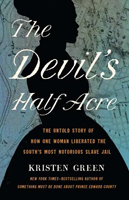 The inspiring true story of an enslaved woman who liberated an infamous slave jail and transformed it into one of the nation's first HBCUs. In The Devil's Half Acre, New York Times bestselling author Kristen Green draws on years of research to tell the extraordinary and little-known story of young Mary Lumpkin, an enslaved woman who blazed a path of liberation for thousands. She was forced to have the children of a brutal slave trader and live on the premises of his slave jail, known as the "Devil's Half Acre." When she inherited the jail after the death of her slaveholder, she transformed it into "God's Half Acre," a school where Black men could fulfill their dreams. It still exists today as Virginia Union University, one of America's first Historically Black Colleges and Universities.
The inspiring true story of an enslaved woman who liberated an infamous slave jail and transformed it into one of the nation's first HBCUs. In The Devil's Half Acre, New York Times bestselling author Kristen Green draws on years of research to tell the extraordinary and little-known story of young Mary Lumpkin, an enslaved woman who blazed a path of liberation for thousands. She was forced to have the children of a brutal slave trader and live on the premises of his slave jail, known as the "Devil's Half Acre." When she inherited the jail after the death of her slaveholder, she transformed it into "God's Half Acre," a school where Black men could fulfill their dreams. It still exists today as Virginia Union University, one of America's first Historically Black Colleges and Universities.
A sweeping narrative of a life in the margins of the American slave trade, The Devil's Half Acre brings Mary Lumpkin into the light. This is the story of the resilience of a woman on the path to freedom, her historic contributions, and her enduring legacy
.
[Return to table of contents]
New Book
Inside/Outside: Adventures in Caribbean History and Anthropology
By Richard Price
University of Georgia Press, Cloth
272 pp., ISBN-13: 978-0820362656, 2022.
Description from the Publisher:
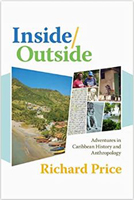 Richard Price's story is told with honesty, humor, and insight. Inside/Outside relates his life as an anthropologist, historian, and Caribbeanist — from conducting predawn discussions with Maroon historians deep in the rainforest of Suriname to editing the world's first book series on Atlantic history and culture; from weekly meetings with Claude Le´vi-Strauss in Paris to long-term collaboration with Sidney Mintz; from adventures at sea with Martiniquan fishermen to negotiating the ivory towers of Harvard, Yale, and Johns Hopkins; from explorations of the art of Romare Bearden to number crunching from the Trans-Atlantic Slave Trade Database. It is a tale of life experiences and often-unconventional life decisions, inside (and outside) the academic world. Readers look over Price's shoulders—and those of his wife and research partner, Sally Price—as he developed the ideas for some of the twentieth- and twenty-first century's most important books in the fields of history, anthropology, and Caribbean studies. Includes discussions of research and field work on African diaspora cultures and Saamaka history in Suriname, Martinique, and Guyane (French Guiana).
Richard Price's story is told with honesty, humor, and insight. Inside/Outside relates his life as an anthropologist, historian, and Caribbeanist — from conducting predawn discussions with Maroon historians deep in the rainforest of Suriname to editing the world's first book series on Atlantic history and culture; from weekly meetings with Claude Le´vi-Strauss in Paris to long-term collaboration with Sidney Mintz; from adventures at sea with Martiniquan fishermen to negotiating the ivory towers of Harvard, Yale, and Johns Hopkins; from explorations of the art of Romare Bearden to number crunching from the Trans-Atlantic Slave Trade Database. It is a tale of life experiences and often-unconventional life decisions, inside (and outside) the academic world. Readers look over Price's shoulders—and those of his wife and research partner, Sally Price—as he developed the ideas for some of the twentieth- and twenty-first century's most important books in the fields of history, anthropology, and Caribbean studies. Includes discussions of research and field work on African diaspora cultures and Saamaka history in Suriname, Martinique, and Guyane (French Guiana).
[Return to table of contents]
New Exhibit
Spirit in the Dark: Religion in Black Music, Activism and Popular Culture
National Museum of African American History and Culture
Smithsonian Mall, Washington, DC.
November 2022 to November 2023
From the Museum:
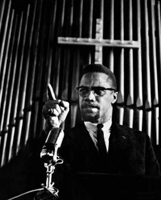 "Spirit in the Dark" opened in November at the National Museum of African American History and Culture. Sometimes in the foreground, sometimes in the background, at times in the shadows—religion is essential to the story of Black America. The exhibition includes photographs of several prominent African Americans, such as Aretha Franklin, Duke Ellington, Marvin Gaye, Angela Davis, Malcolm X, Maya Angelou, Reverend Ike and Jesse Jackson, examining religion's impact on their lives and the larger Black community. Objects in the museum's collection testify to religion's role in the struggle for human dignity and social equality. "Spirit in the Dark" examines Black religious life through a selection of photographs from the Johnson Publishing Company, publisher of Ebony, Jet and Negro Digest.
"Spirit in the Dark" opened in November at the National Museum of African American History and Culture. Sometimes in the foreground, sometimes in the background, at times in the shadows—religion is essential to the story of Black America. The exhibition includes photographs of several prominent African Americans, such as Aretha Franklin, Duke Ellington, Marvin Gaye, Angela Davis, Malcolm X, Maya Angelou, Reverend Ike and Jesse Jackson, examining religion's impact on their lives and the larger Black community. Objects in the museum's collection testify to religion's role in the struggle for human dignity and social equality. "Spirit in the Dark" examines Black religious life through a selection of photographs from the Johnson Publishing Company, publisher of Ebony, Jet and Negro Digest.
The images in the exhibition spotlight noteworthy individuals—including religious and political leaders, musicians, authors, athletes, activists and educators—and are supported by an array of objects from the museum's collection, many on display for the first time. Diverse aspects of the Black Religious experience are revealed by stories of artists blurring the boundaries between the holy and the profane, Black religious leaders bearing witness to wrongs and lighting the pathway to freedom and activists articulating the complex dimensions of the suffering and trauma of Black people in America.
Curated by the museum's Center for the Study of African American Religious Life, a selection of musical and spoken-word performances evokes themes and subjects explored in the "Spirit in the Dark" exhibition. The tracks, spanning an array of genres and eras, express diverse artistic visions and religious experiences.
[Return to table of contents]
New Exhibit
The City Beyond the White City:
Race, Two Chicago Homes, and their Neighborhoods
November 3, 2022 to October 28, 2023
Physical Exhibit at Charnley-Persky House, 1365 N. Astor St., Chicago
Virtual Exhibit at beyondthewhitecity.org
From the Curators:
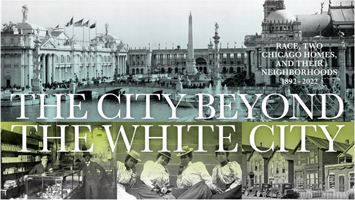 The City Beyond the White City: Race, Two Chicago Homes, and their Neighborhoods, connects the 1893 World's Columbian Exposition, also called the "White City," to the material, spatial, and social histories of two 1892 structures—the Charnley-Persky House and the Mecca Flats—located respectively on Chicago's privileged Near North and disinvested Near South Sides. The physical exhibition, featuring archaeologically recovered artifacts, is accompanied by a virtual exhibit; together they frame the history of race, structures of racism, and the built environment in Chicago.
The City Beyond the White City: Race, Two Chicago Homes, and their Neighborhoods, connects the 1893 World's Columbian Exposition, also called the "White City," to the material, spatial, and social histories of two 1892 structures—the Charnley-Persky House and the Mecca Flats—located respectively on Chicago's privileged Near North and disinvested Near South Sides. The physical exhibition, featuring archaeologically recovered artifacts, is accompanied by a virtual exhibit; together they frame the history of race, structures of racism, and the built environment in Chicago.
The City Beyond the White City features over 30 individual artifacts excavated from the Charnley-Persky House (Adler & Sullivan, 1891–1892) and from the former Mecca Flats (Edbrooke & Burnham, 1891–1892). Together, archival documents, oral histories, and 19th- and early-20th-century artifacts unearthed in archaeological digs are used to interpret a nuanced public history of race and place in Chicago for student and public audiences.
The exhibition is co-curated by Dr. Rebecca Graff, associate professor of anthropology at Lake Forest College, and the late Pauline Saliga, former executive director of the Society of Architectural Historians and the Charnley-Persky House Museum Foundation.
"The structures themselves—the Charnley-Persky House and the Mecca Flats—set the stories of those who lived there in motion," said Dr. Graff. "But ultimately, this exhibition is an intervention between unpeopled architectural histories and narrativity about race and racism in Chicago that lacks a connection to the built environment and human experiences of place, not least the historic experiences of racism in Chicago. Archaeological insights plus architectural histories help to get us there."
The exhibition is organized thematically into four sections. The first section, "Race and the World's Fair Marketplace," looks at the Fair as a literal marketplace for commodities and an ideological marketplace for schemes on race. Late-19th-century racial ideologies are not always central to discussions of sites of architectural significance. But to understand people's experiences of the built environment on three scales—the neighborhoods, the buildings, and the objects they left behind—the exhibit starts with the racial ideologies that suffused the 1893 Fair to see how they were made material at home.
The second section looks at consumption, health, and sanitation in turn-of-the-century Chicago. Contrary to what might be expected, the people who lived and worked in the Charnley House and in the Mecca Flats at the turn of the 20th century shared similar challenges to their health and sanitary infrastructure—ones that defied a simple socioeconomic pattern.
Ideologies of the domestic sphere and the women, domestic servants, and children who formed it, were undergoing a rapid transformation. Racialized notions of American womanhood, in part impacted by the ratification of the 20th Amendment, played out differently at the three sites. "Women, Children, and the Domestic Sphere," focuses on six notable women from the three sites: Nancy Green and Sophia Hayden; Helen Charnley and Marion Stephens; and Madame Nobia A. Franklin and Gwendolyn Brooks. Each of these women highlight the social history that converges around the sites. The section also looks at the children of Bronzeville and the Gold Coast, and the racialization of domestic laborers at the Mecca Flats and the Charnley House.
The final section, "Urban Renewal and Racial Ideology," is perhaps the most significant because it forces the viewer to confront the lingering inequities built into American cities like Chicago. Mid-20th-century federal and state urban renewal programs built upon the slum clearance legislation of the 19th century, destroying countless historic structures and vital neighborhoods largely without considering the interests and desires of the affected communities. Some of the most egregious examples of this in Chicago took place in Bronzeville, but the Gold Coast also experienced this destruction.
[Return to table of contents]
New Podcast
Kinways: Black Museology Podcast
By Richard Paul Benjamin
Episodes available online
Follow updates and discussions.
 Dr. Benjamin is head of the International Slavery Museum and a visiting professor at the University of Liverpool's department of history. He describes the scope of this project -- In Kinways I talk "with a broad range of guests, from museum thinkers and practitioners, artists, community activists, and historians, on subjects relating to Black museology (the study of museums and their development and operation) and the associated museum practices. In particular, the creation of Black Museums and Black cultural spaces and the connected social, artistic, and cultural movements; decolonizing museums, galleries, and archives; and the importance of lived experiences."
Dr. Benjamin is head of the International Slavery Museum and a visiting professor at the University of Liverpool's department of history. He describes the scope of this project -- In Kinways I talk "with a broad range of guests, from museum thinkers and practitioners, artists, community activists, and historians, on subjects relating to Black museology (the study of museums and their development and operation) and the associated museum practices. In particular, the creation of Black Museums and Black cultural spaces and the connected social, artistic, and cultural movements; decolonizing museums, galleries, and archives; and the importance of lived experiences."
For example, "In the first episode, I am talking with Zandra Yeaman, Curator of Discomfort at the Hunterian, University of Glasgow. In later episodes, I am joined by Dr. Mark Sealy, Director of Autograph (the Association of Black Photographers), and Dr. Njabulo Chipangura, Curator of Living Cultures at Manchester Museum. I hope the podcast has a wide appeal and is of interest" to activists, students, and practitioners in multiple domains.
[Return to table of contents]
New Database Resource
Freedmen's Bureau Search Portal
Smithsonian National Museum of African American History & Culture
Available online.
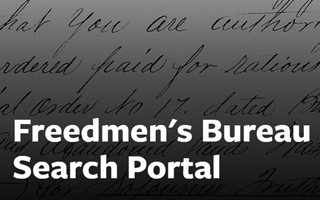 From the Museum's website --
From the Museum's website --
"The Freedmen's Bureau Search Portal provides unprecedented opportunities for family historians and genealogists to search for their ancestors and for scholars to research a variety of topics related to slavery and Reconstruction in the Freedmen's Bureau records."
"The United States Bureau of Refugees, Freedmen, and Abandoned Lands, commonly known as the Freedmen's Bureau, was created by Congress in 1865 to assist in the political and social reconstruction of post-war Southern states and to help formerly enslaved African Americans transition from slavery to freedom and citizenship. In the process, the Bureau created millions of records that contain the names and information of hundreds of thousands of people across the United States including formerly enslaved African Americans, and those who were free before the Civil War, white southerners, northern educators, elected officials, and more."
"The portal makes possible for the first time the ability to research multiple sets of Freedmen's Bureau data in one place, allowing users to search indexed data for specific names, places, and dates and transcribed data for topics, subjects, institutions, and any other words or phrases. Matches to search criteria will be highlighted in the results."
[Return to table of contents]
Decolonizing Global Hegemonies in Africa and the African Diaspora
A Joint Conference by the University of Calabar and New York African Studies Association,
June 26 to July 1, 2023, University of Calabar, Calabar, Cross River State, Nigeria
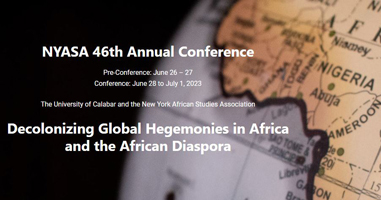 The University of Calabar and the New York African Studies Association invite you to a joint conference on "Decolonizing Global Hegemonies in Africa and the African Diaspora." The decolonization process of the mid-twentieth century was spurred on by decades of anticolonial rebellion throughout Africa and the diaspora. Yet, the nature, temporality, and consequences of decolonization remain contested. The tragic loss of human lives, the erosion of indigenous cultures, religions and languages, along with the depletion of natural resources have continued well beyond the period of decolonization. In fact, independent nations on the African continent and in the diaspora continue to contend with the hegemonic presence of former imperial powers as well as newer economic and resource-hungry global powers such as China and the United States. Efforts to denounce these global hegemonies and regain control of the land, politics, economy, language, and history of the African continent and its diasporas often go unnoticed in Western media, and in Western classrooms. In contrast, this conference, jointly organized by the New York African Studies Association (NYASA) and the University of Calabar, Nigeria aims to create dialogues and encourage exchanges between scholars, teachers, students, and community members, around the question of global hegemonies in Africa and the African diaspora, and the various ways in which their influence has been and continues to be addressed and combatted.
The University of Calabar and the New York African Studies Association invite you to a joint conference on "Decolonizing Global Hegemonies in Africa and the African Diaspora." The decolonization process of the mid-twentieth century was spurred on by decades of anticolonial rebellion throughout Africa and the diaspora. Yet, the nature, temporality, and consequences of decolonization remain contested. The tragic loss of human lives, the erosion of indigenous cultures, religions and languages, along with the depletion of natural resources have continued well beyond the period of decolonization. In fact, independent nations on the African continent and in the diaspora continue to contend with the hegemonic presence of former imperial powers as well as newer economic and resource-hungry global powers such as China and the United States. Efforts to denounce these global hegemonies and regain control of the land, politics, economy, language, and history of the African continent and its diasporas often go unnoticed in Western media, and in Western classrooms. In contrast, this conference, jointly organized by the New York African Studies Association (NYASA) and the University of Calabar, Nigeria aims to create dialogues and encourage exchanges between scholars, teachers, students, and community members, around the question of global hegemonies in Africa and the African diaspora, and the various ways in which their influence has been and continues to be addressed and combatted.
We invite papers that examine the continuing decolonization of global hegemonies in Africa and the African diaspora in conjunction with questions of sources and methods, knowledge production, migration, health, labor, gender and sexuality, performing and visual arts, religion and spirituality, artefacts and museums, civic society, mental health and trauma, information technologies, economy, social sciences, pan-African youth mobilization, equity and integration in higher education, political engagement, environmental studies, and architecture. We welcome contributors from a range of disciplines, including political science, history, geography, architecture, literature, museum studies, medicine, law, religious studies, gender studies, music, Anthropology, sociology, archaeology, environmental studies, business and economics, etc. We also invite proposals from undergraduate students, graduate students, independent scholars and practitioners, as well as community leaders and members of the civic society. While the conference committee is particularly interested in proposals on the theme of decolonization and hegemonic discourses, we will also welcome proposals for presentations, panels, posters, and roundtables that address any dimension of African and African diasporic studies. We are also interested in presentations that reflect African knowledge productions systems such as music, dance, drumming and story-telling. Participants are also welcome to present their papers in African languages.
Submission Guidelines: Abstracts should be emailed to nyasacalabar@gmail.com; Abstracts should be between 250 to 350 words; Participants should submit only one paper abstract; Papers must have a maximum of two presenters; Roundtables and panels may have up to 6 participants; January 27, 2023: Deadline for submission of panels, roundtable, papers, and workshop proposals. We have a rolling review of abstracts.; April 20: Deadline for Early Bird Registration. At the time of submitting your proposal, please indicate if you will need media resources (e.g. Audio-Visual Equipment) for your presentation. Also let us know if your presentation would be in an African language. Visit conference web site for more details.
[Return to table of contents]
African Diasporas and the Society for Historical Archaeology
2023 Conference on Historical and Underwater Archaeology
January 4-7, 2023, Lisbon, Portugal
 Revisiting Global Archaeologies
Revisiting Global Archaeologies
The theme for the conference not only references the international location and outlook of the meeting alongside the modern history of Lisbon as the center of one of the most significant global European empires of the early modern period, but also acknowledges the transformation of historical archaeology into a truly global discipline. It is envisioned that the theme will encourage individual papers and symposia that address the increasingly global character of the discipline in the past, present and future, as well as themes of movement and diaspora, and industrialization and mechanization. Many European archaeologists also define 'historical' archaeology differently, noting that the historical record dates back to earlier periods, and this conference may provide the opportunity to explore disciplinary definitions in a global context while still focusing on the post-1500 world.
SHA's annual conferences include many presentations of subjects concerning African diaspora archaeology.
The conference will include a roundtable discussion on "Repatriation, Reparation, and Reclamation," moderated by Kisha Supernant, Director, Institute of Prairie and Indigenous Archaeology. "In this roundtable, participants will discuss their experiences with issues relating to the repatriation of ancestors and belongings, the need for reparation, and the role of historical archaeology in reclaiming narratives of the past by communities impacted by colonization. The intention of the roundtable is to foster connection and conversation between SHA members who are actively working on repatriation and reparation, especially Black and Indigenous archaeologists, and to discuss how to move forward in ways that center the needs and voices of descendant and ancestral communities."
Another roundtable discussion will focus on "Interrupting Racism and Sexism in Archaeology," moderated by Mia L. Carey and L. Charde Reid: "Has racism and sexism impacted your academic or professional career in archeology? If yes, join us for an interactive discussion about how to identify and interrupt racism and sexism in the discipline. After a brief refresher on the impact of unconscious bias and microaggressions, participants will use the "calling out, calling out" inclusion and equity tool to recognize, name, and address behaviors that cause historically marginalized harm in academia; CRM; hiring retention and recruitment; fieldwork; and training. By the end, participants will be able to walk away with practical tools for combating racism and sexism across the discipline."
The conference program also includes symposia on subjects such as: Global Archaeologies of the Long Emancipation; African American Death and Burial; Africa's Discovery of the World from Archaeological Perspectives: Revisiting Moments of First Contact, Colonialism, and Global Transformation; Materialities of (Un)Freedom: Examining the Material Consequences of Inequality within Historical Archaeology; Global Black Archaeologies: Mobilizing Critical, Anti-Racist, De/Anti-Colonial, and Black Feminist Archaeologies in Uncertain Times; "Folkeliv" and Black Folks' Lives: Archaeology, History, and Contemporary Black Atlantic Communities; Maritime Archaeology in West Africa; among others.
[Return to table of contents]
Book Review
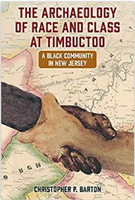 Christopher P. Barton. The Archaeology of Race and Class at Timbuctoo: A Black Community in New Jersey. Gainesville: University Press of Florida, 2022. 152 pp., with figures, tables, index (Cloth), ISBN-13: 9780813069272.
Christopher P. Barton. The Archaeology of Race and Class at Timbuctoo: A Black Community in New Jersey. Gainesville: University Press of Florida, 2022. 152 pp., with figures, tables, index (Cloth), ISBN-13: 9780813069272.
Reviewed for the African Diaspora Archaeology Newsletter by John P. McCarthy, RPA Retired (Dover, DE).
Drawn from Barton's 2015 doctoral dissertation at Temple University, Identity, and Improvisation: Archaeology at the African American Community of Timbuctoo, New Jersey, this concise volume considers issues of the material expression of race and class as documented archaeology at a South Jersey community established in 1826 by formerly enslaved "runaways" and Free Blacks. Timbuctoo was one of a number of small African American communities formed at the margins of Northeastern population centers in the nineteenth-century including Sadlertown in Camden County also, like Timbuctoo, near Philadelphia and Shunk Hollow in Bergen County, outside New York City. Timbuctoo became an important stop on the "Underground Railroad," assisting escapees as they traveled north to freedom.
Barton's understanding of the intersectionality of race and class, as outlined in a chapter devoted to the topic, provides the theoretical structure of the project. The book also reviews the history of the community from documentary and oral sources, and explains how the archaeological investigation of the community was conducted as a deeply collaborative community project. Barton's study is introduced with a foreword by Guy Weston, a prominent member of the descendant and local communities. The results of geophysical survey and excavation work are reviewed, especially the results from excavating the Davis Site, a small house with cellar built sometime after 1879 and apparently abandoned in the 1920s-30s. Subsequently, it was the site of a community trash midden into the 1940s, from which over 15,000 artifacts were recovered.
The physical layout of the community, the use of yard space and the practice of "yard sweeping," and consumer behaviors such as home canning, the purchase of commercial peanut butter, and the acquisition and display of select items collectively regarded as "bric-a-brac," are among the topics explored in detail. Barton convincingly argues that persevering in a racialized, class-oriented society required African Americans to adopt a distinct world view that both enabled and restricted individual practice. He sees the actions of marginalized groups and individuals as improvisational responses developed from living on the social and economic periphery. However, the residents of Timbuctoo were not simply the victims of racial and class-based repression in their daily lives; rather, the members of this community were active social agents who used material goods as "both reflectors and constructors of collective and individual identities" (p. 108).
In his concluding comments, Barton notes the importance of the archaeological study of marginalized communities which shines light on all but unknown social actors from the past, showing how they, in this instance, used landscape, consumer culture, and their own resourcefulness to create meaning and empower themselves in the face of a broader culture of repression. These themes continue to resonate as the struggle against racism continues.
This is a finely crafted volume in which the reader is not drowned in the detailed minutia of archaeological data. Results are clearly and concisely discussed; the focus is refreshingly on the "what" and the "why" of its importance over the "how" of methods and data description. That said, I, for one, would like to know more about the recovered artifact assemblage, especially results usually collectively classified as "small finds" and "personal items" which are among the most powerful conveyers of meaning.
If there is a weakness to point to, it is that Barton has relied exclusively on the historical archaeological literature to develop his understanding of historic consumer culture and related behaviors. While his discussion of that literature is quite thorough, the lack of discussion of the work of other theorists such as Daniel Miller (Material Culture and Mass Consumption, 1987, Material Cultures: Why Some Things Matter, 1998), Colin Campbell (The Romantic Ethic and The Spirit of Modern Consumerism, 1987), and Michael Solomon (Consumer Behavior: Buying, Having, and Being, 1992) is regrettable.
The Archaeology of Race and Class at Timbuctoo: A Black Community in New Jersey is an important addition to the literature of the African Diaspora in the New World, and it will be engaging for anyone interested in African-American history and culture in the Northeast, or in consumer behavior in conditions of adversity. This study also presents a model of community engagement and participation that must be the future of an archaeological discipline that operates in the interests of more than those of the practitioners alone. As such, and due to its relative brevity, it is recommended for classroom use at undergraduate levels (a lower-priced, paperback edition will apparently be available in the future).
[Return to table of contents]
Book Review
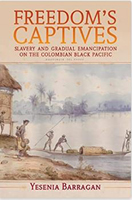
Yesenia Barragan. Freedom's Captives: Slavery and Gradual Emancipation on the Colombian Black Pacific. Cambridge: Cambridge University Press, 2021. 346 pp. (Paperback), with illustrations and maps. ISBN-13: ?978-1108941051.
H-Net Book Review, published by H-LatAm, https://networks.h-net.org/h-latam (Nov. 2022).
Reviewed for H-LatAm by Angela Pérez-Villa (Western Michigan University).
Yesenia Barragan's long-awaited book is a welcome contribution both to Colombian historiography and to the scholarship on slavery and abolition in the Atlantic world. Barragan focuses on the northern Colombian Pacific lowlands to examine how enslaved and free African-descended people navigated the social entrapments that emerged between the promulgation of the Free Womb law in 1821—which mandated that children born to enslaved mothers would not inherit their legal status as slaves—and the final formal abolition of slavery in 1852. She refers to this thirty-one-year period as the time of "gradual emancipation rule" and argues that it was a distinct historical moment in which slaveholders paradoxically reinforced the exploitation and disciplining of captives under a system of slavery in decline. Her examination of this paradox in the province of Chocó reveals not only the pitfalls of liberal freedom but also the existence of other modes of freedom devised by enslaved men and women living in the Pacific lowlands. These modes of freedom, argues Barragan, constituted "small-scale, ordinary revolutions" that allow readers to learn about enslaved families' participation in the contentious legal terrains of gradual emancipation through decades of political turmoil, conservative backlash, and civil war (p. 281).
The book is structured in three parts that take readers on a journey through the social universe of the Black Pacific. Readers learn about the daily life of skilled enslaved people who navigated rivers or extracted gold and the critical questions that emerged about freedom and emancipation in the context of the Wars of Independence. Readers also learn about Colombian elites who debated, drafted, and ratified the Free Womb law in a nascent public sphere; the persistent actions of enslaved families to secure freedom; and eventually the constraints faced by former slaves determined to live autonomously in a deeply fragmented society. Barragan's commitment to upholding an "ethics of historical care" in this painstakingly documented book is demonstrated through her attention to detail and her creative effort to center the voices of the enslaved while making visible the analytical challenges posed by slavery's archive (p. 31). To do this, Barragan is inspired by the methodological labor of scholars like Marisa Fuentes, Saidiya Hartman, and Stephanie Camp. In every chapter, Barragan weaves the stories of African descended men, women, and children from the Chocó into a larger historical narrative with utmost respect and imagination. Through this historical ethnographic approach, readers are compelled to engage with African-descended people's struggles for freedom while facing the frustrations generated by incomplete or silent archives.
Barragan is good at guiding the reader through those silences by engaging other sources, raising questions, and using informed speculation when necessary. For instance, in chapters 1 and 2, she examines foreigners' travelogues when reconstructing the everyday life of bogas (black rowers) and mazamorreros (free black gold prospectors) in the Pacific lowlands. She mines their detailed descriptions of natural landscapes and social relations in order to complicate highly violent and gendered perspectives about African-descended people while pointing at alternative scenarios. Beyond this, her analysis also unveils how foreigners wrote about Colombia's new laws for international audiences and the diplomatic exchanges that emerged concerning abolition. In chapter 3, Barragan discusses the intricate legislative construction of the law in Colombia and compares it to the versions ratified in Argentina, Paraguay, and Peru. This comparative perspective provides helpful insights to understand how they differed from one another, despite having the same end goal, on issues like breastfeeding and designated age for sale. Differences among these laws point to the priorities of lawmakers at the time. In the case of Colombia, Barragan's close examination of periodicals from the period helps her reconstruct intellectual, legal, and economic discourses in defense or against the Free Womb law. The passionate letters and rebuttals published by these newspapers— examined carefully by Barragan—reveal the deep economic anxieties felt by a segment of the slaveholding class as well as the rivalries that existed between family clans with different perspectives on slavery.
Barragan's meticulous approach to civil and notarial records shines through specifically in chapters 4 and 5, where readers are introduced to several episodes involving Free Womb captives and their families. Readers learn that the Catholic Church played a crucial role in the public dissemination of the law by displaying details on its doors. Aware of the legal possibilities to secure freedom for their children, enslaved parents often mobilized their limited resources to obtain important documents like birth certificates, to claim the right to motherhood, or to initiate lawsuits against slaveholders who sold or traded children who were "free by the law" (pp. 175-76). On this last point, Barragan's discussion reveals how slaveholders engaged in the trafficking of Free Womb captives through their inclusion in wills, dowries, inventories, and notes of sale. Furthermore, Barragan argues that slaveholders' management of Free Womb captives as "assets" is a reflection of developing modern capitalist practices that intensified in the 1840s and that, as discussed in chapter 6, might have motivated them to privatize land and forests in attempts to contain the physical and economic mobility of Afro-Colombians.
The book contains a careful selection of images, primary sources from endangered archives, and original maps that illustrate arguments and offer an excellent example to undergraduate and graduate students about the historian's craft. The author's creative use of sources appears, for instance, in chapter 2 where Barragan used an inventory list to create a map that displays house values on three main streets in the city of Quibdó. The map provides a striking image of the city's urban and social organization while visually revealing how property with greater value almost always stood along the riverbank. Additionally, the author's elegant writing style and ability to interconnect every chapter deliver a great reading experience. This means that it is worth assigning the book rather than individual chapters since the scaffolding that appears through the narrative could confuse or distract single-chapter readers. Overall, this book excels at placing the Chocó at the center of discussions on abolition in the Atlantic world while positioning Barragan as an innovative voice in the study of Colombian history today.
[Citation: Angela Pérez-Villa. Review of Barragan, Yesenia, Freedom's Captives: Slavery and Gradual Emancipation on the Colombian Black Pacific. H-LatAm, H-Net Reviews. November, 2022. This work is licensed under a Creative Commons Attribution-Noncommercial-No Derivative Works 3.0 United States License. H-Net permits the redistribution and reprinting of this work for nonprofit, educational purposes.]
[Return to table of contents]
Book Review
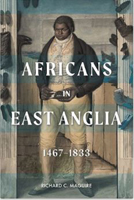
Richard Maguire. Africans in East Anglia, 1467-1833. Martlesham: Boydell Press, 2021. 300 pp. (Cloth). ISBN-13: 978-1-78327-633-2, and Olivette Otele. African Europeans: An Untold History. London: Hurst and Co., 2020. 301 pp. (Cloth). ISBN-13: 978-1-5416-1967-8.
H-Net Book Review, published by H-Africa, https://networks.h-net.org/h-africa (Sept. 2022).
Reviewed for H-Africa by Andrew E. Barnes (Arizona State University).
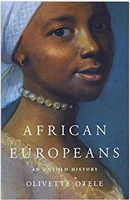
The twenty-first century has seen a growing recognition by scholars of the falsity of the nineteenth-century European notion that European societies had evolved in social and biological isolation from other old-world populations and hence the viability of ideas about "pure races" as the starting point for construction of arguments about nationalism. The two books under discussion in this review take the search for a historical understanding to replace the old notions of Europe's racial past in opposing directions. Olivette Otele's African Europeans: An Untold Story makes a case first that peoples of African descent have been a discernible racial minority in Europe since the era of the Roman empire, and second, that since Roman times,as a racial minority, peoples of African descent have suffered from forms of discrimination and oppression that continue to be repeated in the present. Otele sees the George Floyd tragedy not as just an incident in the racial history of the United States, but as reflective of a historical pattern of interaction between peoples of African and peoples of European descent. The point of her survey of race relations past and present inEurope is to provide those sympathetic to the Black Lives Matter movement with the historical knowledge they need for their struggle. Richard C. Maguire's Africans in East Anglia builds an argument for race as a designation for people of African descent in England as a bourgeois construct developed and promoted across England most systematically by participants in the Atlantic slave trade and Atlantic colonial plantation economies. Maguire situates his study in the tradition of British Marxist labor history and seeks to show the ongoing utility of E. P. Thompson's classic The Making of the English Working Class (1963) for comprehending English social history. In the western regions of England, centered around the town of Norwich, Maguire find that individuals recognizable as Africans appear in the archival record on a progressively more regular basis starting at the end of the fifteenth century. Yet, other than notations of phenotypic appearance, the archival records show no evidence of Africans as distinct or different from other immigrant peoples entering the region. Rather, and this is Maguire's point, peoples of African descent are recognized in the archival record as members of the English working class, with lives conforming to working-class norms of work and lifestyle. African peoples start being noted as racially distinct only at the end of the seventeenth century, when participants in the Atlantic economy begin to settle in the region and have some impact on regional culture and society. It is from that point forward that notions of race begin to trump notions of class. Still, through the start of the nineteenth century, the cutoff point for Maguire's study, the patterns of discrimination and oppression talked about by Otele are not a discernible feature of race relations in the region.
In different ways and for different reasons, methodology would be an issue raised about both studies by some historians. Otele's study is surprisingly Eurocentric in its one-to-one equation of European history with world civilization. To be fair, Otele's study is more concerned with the present than the past and she shows a fair amount of due diligence in scouring the European past for illustration of her thesis. The best chapter and primary reward for reading the book is the last chapter, where she offers a wide-ranging survey of race and gender in contemporary Europe from the perspective of identity politics. In the 1990s, the writings of John and Jean Comaroff questioned the value of using archival materials as a mirror of social and cultural realities. Though they are not mentioned, Maguire's monograph is a remarkable rebuttal to their argument. Meticulously, Maguire combed the state and church archives for the East Anglia region to discover every citation of individuals of African descent. To the extent to which records reveal racism, he makes a plausible argument that racism was a trapping of the rise of the bourgeoisie. Unfortunately, that is not the main argument he is trying to make. He wants to affirm that peoples of African descent living in East Anglia absorbed working-class consciousness. His argument here is completely constructed from silence. Strikingly, in a twenty-first-century historical study dedicated to the discussion of Afro-English consciousness, he doesnot quote or communicate the thinking of a single East Anglian of African descent. Maybe peoples of African descent shared the values and sensibilities of their non-African neighbors; maybe after generations of intermarriage they lost all awareness of their distant African ancestors, but Maguire offers no evidence to prove either conclusion.
Again, in differing ways, both of these works suggest that what W. E. B. Du Bois famously labeled "the problem of the color line" persists into the twentieth-first century. Neither work finds a way to fit theEuropeans who resulted from unions between peoples of African and European descent cleanly into its argument. Otele's book takes identity politics as its starting point. The only way it can fit these individuals into its argument is by postulating that they have a "dual heritage," leaving unexplained just what the term means and how it should be understood to have operated as a historical phenomenon. Maguire insists that the term "mulatto" had no regional parlance until retired West Indian plantation owners introduced it into the archival record, raising the question of just how the phenotypic legacies of African ancestry were (or were not) acknowledged by locals before the eighteenth century. An interesting question prompted by Maguire's research in fact is whether "mulatto" was used in eighteenth-century East Anglia in much the same way that the term "mestizo" was used in eighteenth-century Mexico, to signal a form of creolization that involved both phenotypical as well as cultural amalgamation. Both Otele's work and Maguire's work represent a movement away from a conceptualization of Europe's racial past held in thrall to the needs of European nationalists. Both, though, struggle to make the new historical understanding confirm arguments about race and class from the last century.
[Citation: Andrew E. Barnes. Review of Maguire, Richard, Africans in East Anglia, 1467-1833, and Otele, Olivette, African Europeans: An Untold History. H-Africa, H-Net Reviews. September, 2022. This work is licensed under a Creative Commons Attribution-Noncommercial-No Derivative Works 3.0 United States License. H-Net permits the redistribution and reprinting of this work for nonprofit, educational purposes.]
[Return to table of contents]
Film Review
Basquiat, Africa at Heart — Beating Deeply
Review by Neely Swanson, EasyReader News, 2022.

"'Basquiat, Africa at Heart,' a documentary created by Cyril Bérard, dissects Jean-Michel Basquiat's influential trip to Africa. Basquiat catapulted to fame when the contemporary art establishment embraced his street graffiti work, finding it raw, vibrant, and revolutionary. Part of a street movement that encompassed rap and punk, his art became an embodiment of hip hop. He appropriated poetry, found articles, painting, folkloric masks, and drawing into his graffiti murals and paintings. His meteoric rise was cut short at the age of 27 when he died of a heroin overdose."
"Rebellious by nature, he tested the limits of his teachers, friends, and family, eventually dropping out of school, an action that prompted his father to kick him out of the house. He crashed with friends and continued his street art with his graffiti partner and school friend Al Diaz."
"He was soon discovered by important gallerists in Manhattan and was represented by major dealers by the time he was 20. It was his international dealer, Bruno Bischofberger, who introduced him to Warhol. By 1983, at the age of 22 he became the youngest artist to show at the Whitney Museum's Biennial."
"In 1986, Bischofberger organized his trip to the Ivory Coast for an exhibition of his work at the French Cultural Institute in Abidjan. Although the show received only mixed reviews from its perplexed audience who considered the work shocking, his art resonated in a particularly strong manner with local African artists, most of whom had been rejected by the establishment of their community. One group of artists called the Vouvou, a derogatory expression used to imply worthless junk, was very taken by his work because it so closely mirrored their own. Poor, and without the means to purchase paints and canvases, they improvised with what they found in their villages working with cardboard, copper, animal skins, bark, and feathers. Their subject matter, much of which is seen in Basquiat's work, reflected skulls, death, fear, and their black skin. Neither the Vouvou nor Basquiat had had any previous encounter; the similarities are striking. Although Basquiat had never been to Africa, he had what he explained was a cultural memory. As he said, 'I don't have to look for it. It exists. It's there in Africa. Our cultural memory follows us everywhere.'"
[Read this full article online. >>> Watch a discussion with film Director Cyril Bérard and Producer Rachel Kahn, moderated by Franklin Sirmans, Director of Pérez Art Museum Miami and an expert on Basquiat's works >>>].
[Return to table of contents]

©2022 African Diaspora Archaeology Network
Copyright and all rights reserved by
individual authors for each article.
Please send comments, suggestions,
or questions to the editors
Last updated: December 18, 2022
Text only menuSearch
|











